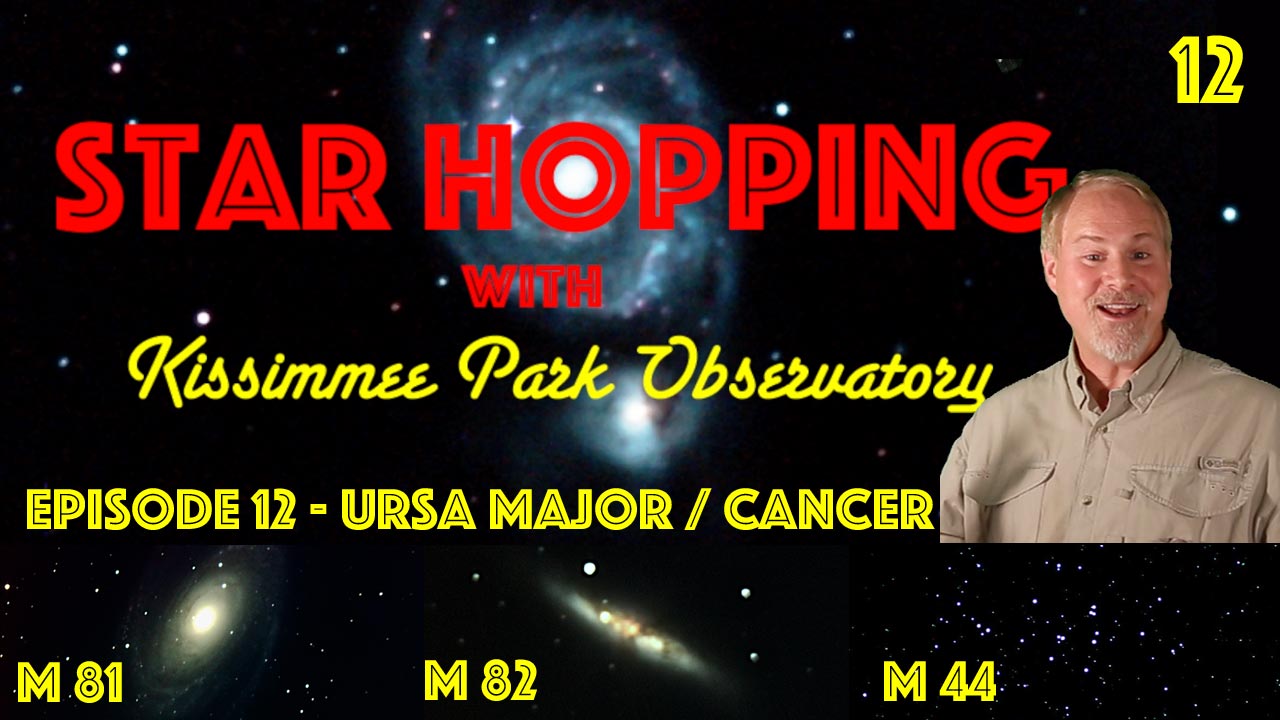In Episode SH012 of Star Hopping…
We’re looking at the Ursa Major Region and Cancer as well. We’ll show you how to find the two beautiful galaxies Messier 81 and 82, otherwise known as Bode’s Galaxies, in Ursa Major. Then we’ll check out Messier 44, the huge open star cluster in the constellation of Cancer.
There is a special announcement about something exciting coming up in January at the end of the video, so don’t miss it!
Intro
A couple of episodes ago, we talked about the second most recognizable constellation in the Winter Sky: Orion. This week we’re focusing on two constellations in the northeastern sky, and one of them is the number one best known constellation, Ursa Major, due to its famous “asterism”, The Big Dipper.
So what is an asterism? It’s a well known grouping or pattern of stars that is not necessarily a formal constellation. The Big Dipper, a pattern of bright stars in the sky that many of us first learned when we were very young, is not really a constellation in itself. It’s just a part of the much larger constellation of Ursa Major, the Great Bear. Ursa Major is a huge constellation; in fact it’s the third largest in the sky, covering 1,279 square degrees. It is only 3 square degrees short of the largest constellation of Hydra, the water snake.
The Famous Pole Pointers
At 10:30 at night you can see the entire “bowl” of the big dipper rising above the northeastern horizon. The two bright stars that form the top line of the Bowl are Merak and Dubhe, which are also known as the “Pole Pointers”. If you draw a line from Merak through Dubhe, and proceed approximately 30 degrees, you’ll encounter the bright star Polaris, also known as the North Star. Polaris is located in the constellation of Ursa Minor, the Small Bear. So if you can see the bowl of the Big Dipper in the sky, you can always use the Pole Pointers to find due North, and Polaris. This trick has been used by sailors and navigators for thousands of years.
Actually by this time, a very large portion of Ursa Major is well up into the sky. High above the bowl of the Big Dipper lies two magnificent galaxies, Messier 81, also known as Bode’s Spiral, and Messier 82, nicknamed the Cigar Galaxy. Both of these galaxies were discovered by Johann Elert Bode in 1774, and Charles Messier added them to his famous list in 1781. You can actually see these two in binoculars, but a telescope will do the best to help you see them clearly. When you’re on hunt for any galaxy, a larger reflector will allow you to see details; I would suggest a scope with a mirror of 8 inches or more for this particular galaxy hunt…
CLICK >>> Watch this Episode on YouTube!
Let us know your Questions and Comments!
Please feel free to leave a question or comment below, and we will respond as quickly as we can. You can also reach out to Dave on Twitter @StarHoppingMan.
Connect with Star Hopping!
We would love to have you join us on our various social media sites, and subscribe to our newsletter. Visit our Contact page to connect with us!
Credits for this Episode
- Star Chart Images & Simulations Courtesy of SkySafari Astronomy http://SkySafariAstronomy.com.
- M81 image by David Hearn / Kissimmee Park Observatory
- M82 image by David Hearn / Kissimmee Park Observatory
- M44 image by David Hearn / Kissimmee Park Observatory


